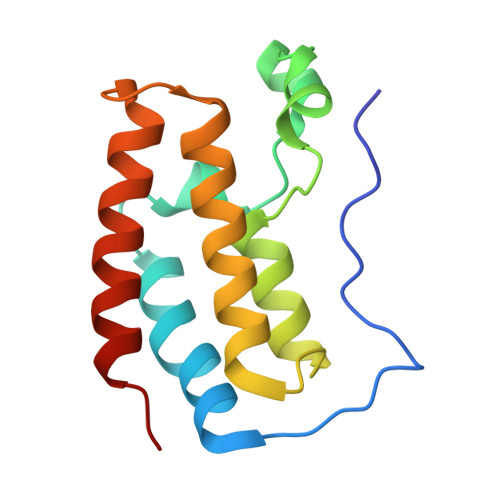Structure-Guided Design of ISOX-DUAL-Based Degraders Targeting BRD4 and CBP/EP300: A Case of Degrader Collapse.
Edmonds, A.K., Balourdas, D.I., Marsh, G.P., Felix, R., Brasher, B., Cooper, J., Graber-Feesl, C., Kollareddy, M., Malik, K., Stewart, H., Chevassut, T.J.T., Lineham, E., Morley, S., Fedorov, O., Bennett, J., Rajasekaran, M.B., Ojeda, S., Harrison, D.A., Ott, C.J., Joerger, A.C., Maple, H.J., Spencer, J.(2025) J Med Chem 68: 9638-9660
- PubMed: 40244695
- DOI: https://doi.org/10.1021/acs.jmedchem.5c00395
- Primary Citation of Related Structures:
9F1J, 9F1K, 9F1L, 9F1M, 9F1N - PubMed Abstract:
Degraders with dual activity against BRD4 and CBP/EP300 were designed. A structure-guided design approach was taken to assess and test potential exit vectors on the dual BRD4 and CBP/EP300 inhibitor, ISOX-DUAL. Candidate degrader panels revealed that VHL-recruiting moieties could mediate dose-responsive ubiquitination of BRD4. A panel of CRBN-recruiting thalidomide-based degraders was unable to induce ubiquitination or degradation of target proteins. High-resolution protein cocrystal structures revealed an unexpected interaction between the thalidomide moiety and Trp81 on the first bromodomain of BRD4. The inability to form a ternary complex provides a potential rationale for the lack of degrader activity with these compounds, some of which have remarkable affinities close to those of (+)-JQ1, as low as 65 nM in a biochemical assay, vs 1.5 μM for their POI ligand, ISOX-DUAL. Such a "degrader collapse" may represent an under-reported mechanism by which some putative degrader molecules are inactive with respect to target protein degradation.
- Chemistry Department, School of Life Sciences, University of Sussex, Brighton BN1 9QJ, U.K.
Organizational Affiliation:



















